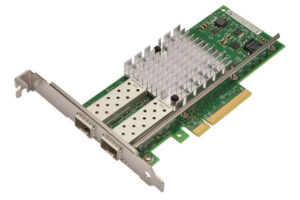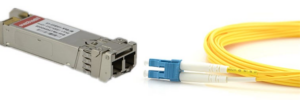LACP with 2x 10Gbps SFP+: What It Is and Why All ServerSP Dedicated Servers Include This Technology by Default
When discussing high-performance dedicated servers, many aspects are often considered: processing power, storage, memory, security, and so on. However, one key element frequently underestimated — yet essential — is network connectivity. That’s where LACP (Link Aggregation Control Protocol) with 2x 10Gbps SFP+ comes into play, a standard feature on all Bare Metal servers provided by ServerSP at no additional cost. In this article, you’ll understand what LACP is, how it works, its real-world benefits, and why ServerSP includes this setup as a default advantage.
What is LACP?
LACP, or Link Aggregation Control Protocol, is a network protocol defined by the IEEE 802.3ad standard. It allows the bundling of multiple physical Ethernet interfaces into a single logical link. This technique is called link aggregation, and its main goals are to increase available bandwidth, improve network reliability, and provide fault tolerance.
Rather than relying on a single network cable, your server connects to the switch using two or more links, all working as one. As a result, you get:
- Combined bandwidth (e.g., 2x 10Gbps = up to 20Gbps throughput);
- Failover support — if one cable or interface goes down, traffic continues through the other without disruption;
- Load balancing across multiple network paths.
What are SFP+ ports?
SFP+ (Small Form-Factor Pluggable Plus) ports are high-speed, hot-swappable transceiver slots capable of 10Gbps speeds. Common in modern data centers, they connect via DAC (Direct Attach Copper) cables or optical modules.
Compared to standard RJ-45 Ethernet ports, SFP+ offers:
- Lower latency and power consumption;
- Support for longer distance connections with optical fiber;
- Compact design — ideal for high-density deployments.
LACP in Action: How It Works
When LACP is enabled on both the server and switch, it logically bonds the two physical ports into one virtual interface. LACP exchanges control packets (LACPDUs) to monitor link status and dynamically add or remove interfaces from the aggregated group.
Traffic distribution can be based on several algorithms, typically referred to as hash policies or load balancing modes, including:
- Layer 2: based on source and destination MAC addresses;
- Layer 3: based on source and destination IP addresses;
- Layer 4: based on source and destination TCP/UDP port numbers;
- Layer 2+3 or Layer 3+4 combinations: combining MAC/IP and port info for more even load distribution.
These methods ensure traffic is efficiently balanced across the physical interfaces, improving performance and preventing bottlenecks.
Benefits of LACP with 2x 10Gbps SFP+ for Your Projects
1. High Network Performance
Using dual 10Gbps connections allows for up to 20Gbps of total bandwidth. This is vital for data-intensive workloads such as:
- Real-time backups;
- High-definition video streaming;
- Hosting multiple virtual machines (VMs);
- Virtualization and container environments;
- Online gaming platforms with low-latency demands.
2. High Availability (HA)
If one link fails, traffic automatically continues over the remaining link. This significantly reduces downtime risks due to hardware failure. For mission-critical environments, this is a major asset.
3. Intelligent Load Balancing
Network load is distributed across both links, reducing latency and ensuring smoother operations under high traffic conditions.
4. Scalability
If your business or project grows, your server’s networking is already equipped to handle more bandwidth. There’s no need to upgrade or reconfigure — you’re ready to scale.
Why ServerSP Includes This by Default
In most hosting providers, dual 10Gbps links with LACP are considered a premium feature and offered only at an additional cost. ServerSP includes it standard in all dedicated servers, regardless of plan or purpose:
- 2x 10Gbps SFP+ interfaces;
- LACP pre-configured;
- Connected to redundant, enterprise-grade switches.
This choice was made to:
- Deliver the best possible performance for all client profiles;
- Enhance overall reliability;
- Offer enterprise-grade networking at a competitive price;
- Prevent common network bottlenecks right from deployment.
Practical Use Case: VPS Reseller Setup
Let’s say you run a VPS reselling business on a ServerSP dedicated server. With LACP 2x 10Gbps, you can:
- Support more clients simultaneously;
- Guarantee better upload/download speeds per virtual machine;
- Separate management and public traffic flows;
- Mitigate downtime from single cable or port failure.
Comparison Table: ServerSP vs Traditional 1Gbps Offerings
| Feature | ServerSP (2x 10Gbps with LACP) | Typical Competitors (1Gbps Standard) |
|---|---|---|
| Bandwidth | Up to 20Gbps | Up to 1Gbps |
| Redundancy | Yes, by default | Rare or optional |
| Fault Tolerance | High | Low |
| Ideal for Virtualization | Yes | Limited |
| Included in Plan | Yes | Often extra cost |
Conclusion
Network performance is foundational for any dedicated server project. LACP with 2x 10Gbps SFP+ isn’t just a tech upgrade — it’s a core infrastructure feature that ensures stability, speed, and scalability.
At ServerSP, this setup comes standard, ready to deploy within 30 minutes, with no hidden costs or complicated setup. If you’re looking to build serious infrastructure with maximum uptime and performance, we’ve already built it for you.
Explore our servers with 2x 10Gbps LACP and take your network to the next level.








